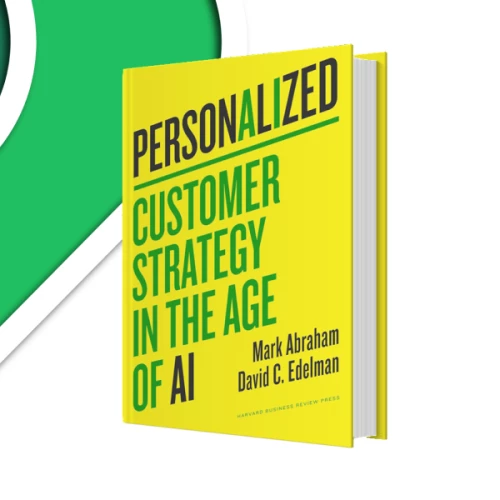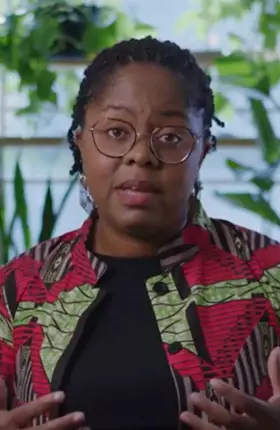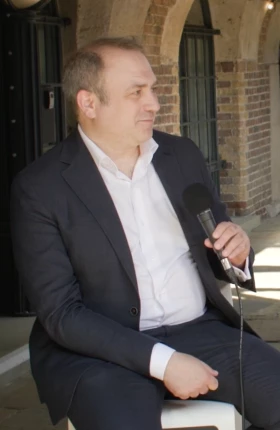The payments industry has entered a decisive new phase. What was once steady evolution has tipped into structural change. Leaders will rethink the game—not just play it faster.
Featured Insights
Annual Flagship Reports

Article
September 22, 2025

Report
June 24, 2025
Organic growth—not market gains—is now the key differentiator for wealth managers navigating a more competitive and uncertain environment.

Article
May 21, 2025
Banks must move beyond pilots to redefine strategy, technology, and governance—or risk losing control of the financial landscape to faster movers.

Report
April 29, 2025
To continue on the path to growth, asset managers must adapt to the new market forces that are reshaping the industry.

Article
October 21, 2024
Tectonic shifts are reshaping the industry, as value migrates from traditional corporate and investment banks to nonbank financial institutions. But taking action on five priorities can position CIBs for long-term competitive advantage.

Report
October 14, 2024
To attain the profitable growth investors want, payments companies must pivot to value.
Digital
Video
Cloud Platforms Can Solve Hard Data-Management Problems
Naftali Cohen of the London Stock Exchange Group discusses some of the significant challenges that cloud technology can overcome—and those that still lie ahead.
Video
July 26, 2023
What’s Possible? GenAI and Banking
Banks have plenty of customer data and tech expertise, but will need to balance the opportunities of generative AI against privacy, accuracy, and compliance concerns. Michael Strauss takes a look at tomorrow's opportunities.

Report
July 24, 2023
Better risk-mitigation strategies are here for digital-currency-related products and services. Use them to safeguard your investment and reputation in the ever-changing crypto landscape.

Report
March 29, 2023
Indonesia’s vibrant fintech industry is on the path to a remarkable future of expanding and diversifying opportunities.
Book
Personalized: Customer Strategy in the Age of AI
Personalization is a $2 trillion opportunity. BCG's new book offers a playbook for capturing your share of this personalization prize in the financial and banking sectors.
Retail Banking

Report
March 13, 2023
Saudi Arabia’s banking sector experienced a period of high profitability in 2022 and is poised for continued growth for 2023.

Article
December 14, 2022
Financial institutions that lead on social tend to outperform. But there is no “net zero” for social—and banks are struggling to seize the opportunity.

Article
October 24, 2022
Research from BCG and Adyen suggests that platforms are poised to solve small-business pain points—and revolutionize financial services in the process.

Report
September 27, 2022
Sustainability is moving up the priority list for all retail bank stakeholders. What does a “sustainable” bank look like?
Financial Institutions on LinkedIn
How will financial institutions evolve? How will consumers bank ten years from now? Connect with us on LinkedIn to view our latest insights and share your ideas.
Asset & Wealth Management
Video
May 12, 2025
Scaling Financial Security in the Digital Economy
Mastercard’s Shamina Singh and BCG’s Rich Lesser discuss how public-private partnerships can help provide financial security for a rising global middle class.
Video
May 24, 2023
An Asset Manager on Clients’ Biggest Challenges
Hanneke Smits, CEO of BNY Mellon Investment Management, talks about how clients can still find good value through asset reallocation.
Video
October 22, 2020
How to Reduce the Wealth Gap between Black and White Americans
White families in the United States have a median wealth nearly 10 times greater than that of Black families. BCG managing director and partner Kedra Newsom Reeves explores this racial wealth inequality, and outlines how financial institutions can support Black Americans.

Report
June 1, 2023
A new breed of end-to-end, third-party platforms can be successfully deployed by wealth and asset managers to help them cut costs and lift revenues.
Corporate Banking and Capital Markets

Article
June 6, 2023
A laser-like focus on transforming marketing for efficiency can be the elusive key to unlocking effectiveness and growth as well.

Update
August 9, 2023
US banks will need to act quickly and decisively to prepare for significant changes in regulation.

Article
October 27, 2023
With the right strategy and platform, banks can transform ESG data from a headache into an opportunity.

Article
September 22, 2023
Recent failures highlight the importance of building resilient approaches to financial risk management.
Weekly Insights Subscription
Stay ahead with BCG insights on financial institutions
Payments and Transaction Banking

Report
September 12, 2023
With revenue growth slowing and the entire payments stack in flux, leaders cannot stand still. Winners will embrace the new fundamentals of growth and pivot their organizations now.

Article
November 21, 2023
Permissioned decentralized finance—a blockchain-based financial technology—may finally support a cross-border payment system that is faster, cheaper, and more verifiable.

Report
October 3, 2022
BCG’s 20th annual study of the global payments industry examines how all participants in the payments ecosystem—including acquirers, issuers, networks, wholesale transaction banks, and fintechs—can raise their game by pursuing new strategies for growth.
Hot Topics

Report
June 26, 2024
Despite a continuing funding chill, fintech is on track for $1.5 trillion in revenues by 2030. But the rules of the game have changed.

Article
September 9, 2025
The right product, marketing, and capability mix can help SaaS players become the finance tool of choice for small and medium enterprises.

Article
November 13, 2024
A clear framework outlines mechanisms and pathways that unlock more capital to ensure the climate transition is not only green but also equitable.
Video
Financing the Energy Transition
BMO’s Jonathan Hackett sees opportunities in bringing together traditional and catalytic capital to push the boundaries of what’s possible.












